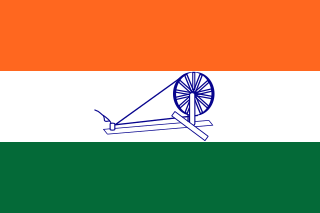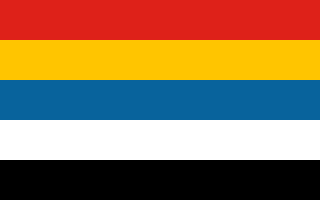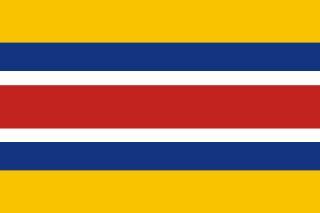 W
WThe Provisional Government of Free India or, more simply, Azad Hind, was an Imperial Japanese puppet government for India established in Japanese occupied Singapore during World War II. It was created in October 1943 and supported by–as well as largely dependent on–the Empire of Japan.
 W
WThe State of Burma was a puppet state of the Empire of Japan, created in 1943 during the Japanese occupation of Burma in World War II.
 W
WThe East Hebei Autonomous Government, also known as the East Ji Autonomous Government and the East Hebei Autonomous Anti-Communist Government, was a short-lived late-1930s state in northern China. It has been described by historians as either a Japanese puppet state or a buffer state.
 W
WThe Great Way or Dadao Government, formally the Great Way Municipal Government of Shanghai, was a short-lived puppet government proclaimed in Pudong on December 5, 1937, to administer Japanese-occupied Shanghai in the early stages of the Second Sino-Japanese War.
 W
WThe Kingdom of Luang Phrabang, was a puppet state of Japan from 8th April 1945 to 15th September 1945.
 W
WManchukuo, officially the State of Manchuria prior to 1934 and the Empire of Manchuria after 1934, was a puppet state of the Empire of Japan in Northeast China and Inner Mongolia from 1932 until 1945. It was founded in 1932 after the Japanese invasion of Manchuria, and in 1934 it became a constitutional monarchy. Under the de facto control of Japan, it had limited international recognition.
 W
WMengjiang (Mengkiang), also known in English as Mongol Border Land or the Mongol United Autonomous Government, was an autonomous area in Inner Mongolia, formed in 1939 as a puppet state of the Empire of Japan, then from 1940 being under the nominal sovereignty of the Reorganized National Government of the Republic of China. It consisted of the previously Chinese provinces of Chahar and Suiyuan, corresponding to the central part of modern Inner Mongolia. It has also been called Mongukuo or Mengguguo. The capital was Kalgan, from where it was ruled by the Mongol nobleman Prince Demchugdongrub. The territory returned to Chinese control after the defeat of the Japanese Empire in 1945.
 W
WThe North Shanxi Autonomous Government was an administratively autonomous component of Mengjiang from its creation in 1937 to its complete merger into Mengjiang in 1939. Following the Japanese invasion of China in July 1937, regional governments were established in Japanese-occupied territories. After Operation Chahar in September 1937, which extended Japanese control to northern Shanxi region, more formal control of the area was established through the creation of the North Shanxi Autonomous Government, as well as the South Chahar Autonomous Government to the east of Shanxi.
 W
WThe Provisional Government of the Republic of China was a Chinese puppet state of the Empire of Japan that existed from 1937 to 1940 during the Second Sino-Japanese War. It had been formed largely on the initiative of Imperial Japanese Army commanders in north China, before securing approval from Japanese government authorities in Tokyo. Thus the Provisional Government had nominal authority in Japanese occupied zones in north China, while to the south the Central China Expeditionary Army established the Reformed Government of the Republic of China in 1938, which had authority in the Yangtze River area. Both essentially served as a local organ of the Japanese military authorities, due to the presence and extensive powers of Japanese advisors within the Provisional Government over native Chinese bureaucrats, and because it never made any attempt to secure international recognition, even from Japan.
 W
WThe Reformed Government of the Republic of China was a Chinese puppet state created by Japan that existed from 1938 to 1940 during the Second Sino-Japanese War. The regime had little authority or popular support, nor did it receive international recognition even from Japan itself, lasting only two years before it was merged with the Provisional Government into the Reorganized National Government of the Republic of China under Wang Jingwei. Due to the extensive powers of the Japanese advisors within the government and its own limited powers, the Reformed Government was not much more than an arm of the Japanese military administration.
 W
WThe Second Philippine Republic, officially known as the Republic of the Philippines and also known as the Japanese-sponsored Philippine Republic, was a puppet state established on October 14, 1943, during the Japanese occupation.
 W
WThe Empire of Vietnam was a short-lived puppet state of Imperial Japan governing the former French protectorates of Annam and Tonkin between March 11 and August 23, 1945.
 W
WThe Wang Jingwei regime is the common name of the Reorganized National Government of the Republic of China, the government of the puppet state of the Empire of Japan in eastern China called simply the Republic of China. This should not be confused with the Republic of China under Chiang Kai-shek, which was fighting with the Allies of World War II against Japan. The country was ruled as a one-party republic under Wang Jingwei, a very high-ranking former Kuomintang (KMT) official. The region that it would administer was initially seized by Japan throughout the late 1930s with the beginning of the Second Sino-Japanese War. Wang, a rival of Chiang Kai-shek and member of the pro-peace faction of the KMT, defected to the Japanese side and formed a collaborationist government in occupied Nanking (Nanjing) in 1940. The new state claimed the entirety of China during its existence, portraying itself as the legitimate inheritors of the Xinhai Revolution and Sun Yat-sen's legacy as opposed to Chiang Kai-shek's government in Chunking (Chongqing), but effectively only Japanese-occupied territory was under its direct control. Its international recognition was limited to other members of the Anti-Comintern Pact, of which it was a signatory. The Reorganized National Government existed until the end of World War II and the surrender of Japan in August 1945, at which point the regime was dissolved and many of its leading members were executed for treason.